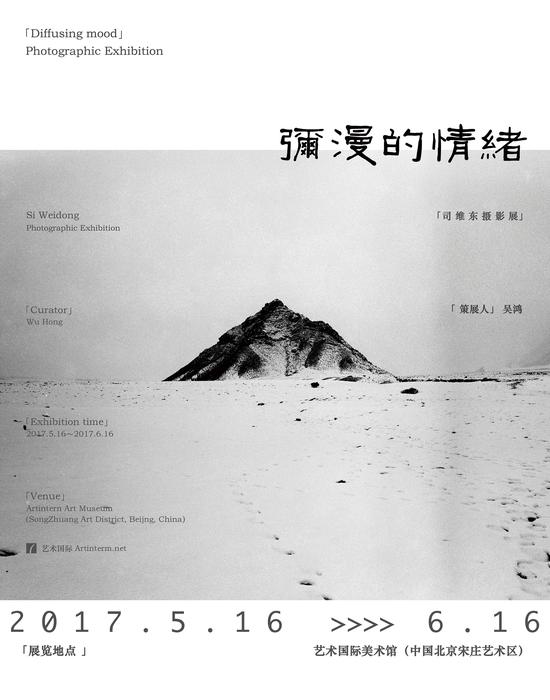
弥漫的情绪——司维东摄影展
策展人:吴鸿
展览时间:2017-05-16~2017-06-16
开幕时间:2017年5月16日(周二),16:00
展览地点:艺术国际美术馆
地 址:北京市通州区宋庄小堡北街205号
“Diffusing Mood” Si Weidong Photographic Exhibition
Curator: Wu Hong
Duration: 2017-05-16 ~ 2017-06-16
Opening: 2017.5.16(Tue),16:00
Venue: Artintern Art Museum
Address: No.205,Xiaobaocun North Road,Songzhuang,Tongzhou District,Beijing
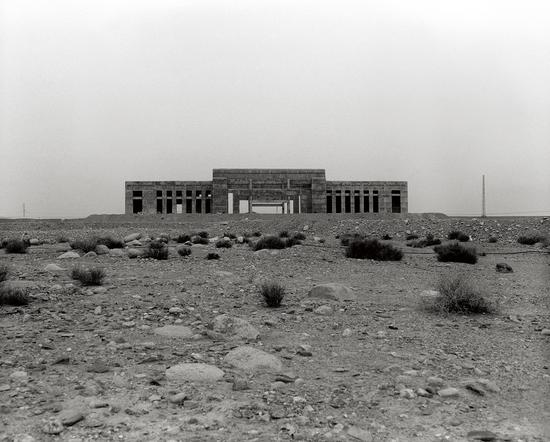 废墟系列-2012年,新疆 托克逊,20x26cm,铂钯工艺
废墟系列-2012年,新疆 托克逊,20x26cm,铂钯工艺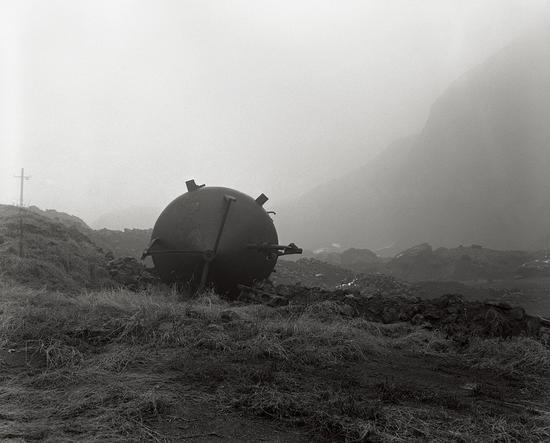 废墟系列-2011年2月,山东 淄博,20x26cm,铂钯工艺
废墟系列-2011年2月,山东 淄博,20x26cm,铂钯工艺废墟中的抒情——评司维东的摄影作品
文/吴鸿
纪实摄影在中国不仅仅意味着是一种摄影风格,它还代表着一种社会态度和价值判断。可以这么说,自上个世纪下半叶以来,纪实摄影的沉浮与兴灭,是伴随着每个时代的政治气候的不同而变化的。
上个世纪八十年代初是一个分水岭。在之前,纪实摄影是无法合法化的,它只能以一种个人的方式私下里存在着。一些人自发地、本能地出于社会良心,在体现着主流价值观和意识形态的摄影规范之外,冒着极大的政治风险,用相机记录着那个时代的社会真实。也正因为它的这种方式是私下而零星的,也没有能够得以发表和传播的途径,所以,纪实摄影在那个时代注定也是“无名”的。也就是说,它虽然以个人自发的方式存在着,但无法作为一种社会文化现象而被命名。
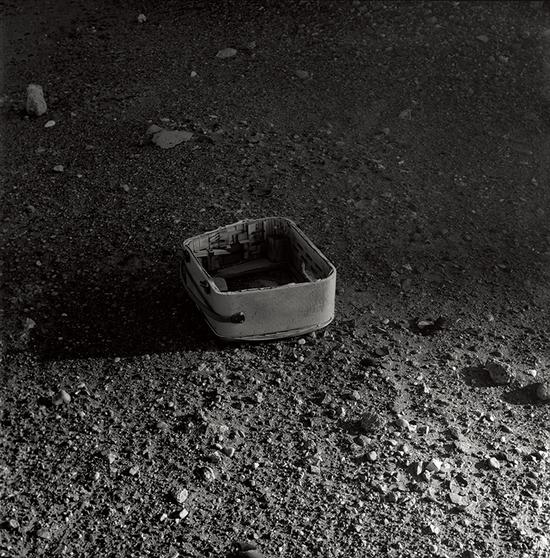 废墟系列-2013年1月,甘肃 酒泉,20x20cm,铂钯工艺
废墟系列-2013年1月,甘肃 酒泉,20x20cm,铂钯工艺八十年代之后,随着政治环境的改变,纪实摄影才得以用公开或半公开的方式进行传播,随之,作为一种摄影风格或样式,也才得到被命名的机会。但是,非常微妙的一点,这些以纪实摄影之名而出现的社会影像,却只能在一些摄影专业期刊上才能够有一席之地。也就是说,即使是在政治气候相对宽松的八十年代,纪实摄影所隐藏的个人化、非主流性的社会态度和价值判断,也无法被主流社会意识形态所认可。
那么,这里所揭示出来的一个问题即是,摄影到底是主观的还是客观的?也就是说,它到底是一种对于“真实对象”的客观再现,还是仅仅将对象作为一种体现主观意志的材料和工具?
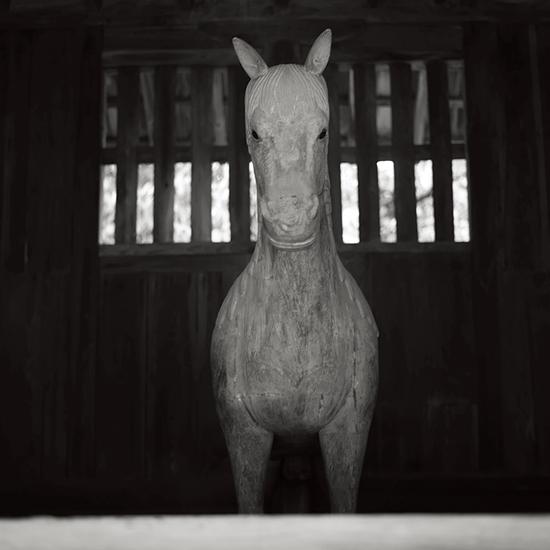 动物系列-2010年,日本 德岛县,20x20cm,铂钯工艺
动物系列-2010年,日本 德岛县,20x20cm,铂钯工艺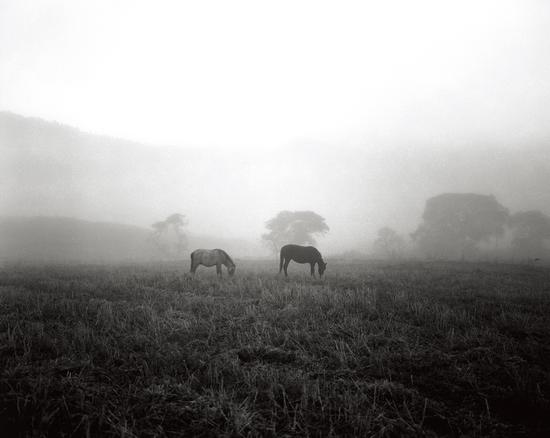 动物系列-2009年,西藏林芝 鲁朗镇,20x26cm,铂钯工艺
动物系列-2009年,西藏林芝 鲁朗镇,20x26cm,铂钯工艺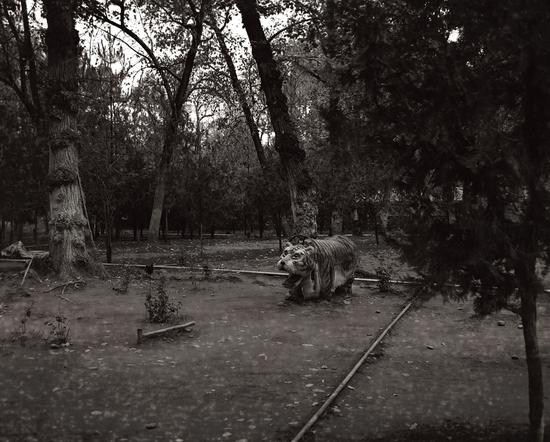 动物系列-2009年,西藏拉萨,罗布林卡,20x26cm,铂钯工艺
动物系列-2009年,西藏拉萨,罗布林卡,20x26cm,铂钯工艺从摄影的技术特征而言,通过物理光学和化学的方式,将客观对象的影像固定在物质媒介上,从而实现对于对象最为逼真的再现。这样,似乎能得到一个“摄影=真实”或“摄影影像=客观存在”的简单命题。也正因为如此,摄影作为一种有效而直接的宣传方式,在社会政治活动中,一直是被有意识地强化着它“客观”和“真实”的一面。
而实际情况是,无论是社会整体,还是某一个特定对象,人们正确认识它的途径必须是要基于一个综合感观以及多层面的分析,而摄影仅仅是基于某种特定的角度,将某一个特定的瞬间固定下来,其局限性和片面性必然是显而易见的。
所以,上个世纪八十年代出现的纪实摄影,它的进步意义即在于,通过呈现“另外一种”观察事物的角度和方式,破除了主流意识形态化的官方摄影规范的神圣性和唯一性。由此,随着建立在摄影“真实性”基础上的主流影像神话的坍塌,促使了人们对于大一统式的社会观念和政治宣传的怀疑和反思。
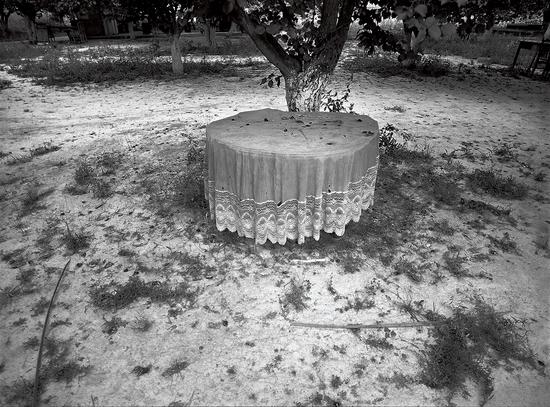 废墟系列-2006年,新疆 阿克苏阿瓦提,20x26cm,铂钯工艺
废墟系列-2006年,新疆 阿克苏阿瓦提,20x26cm,铂钯工艺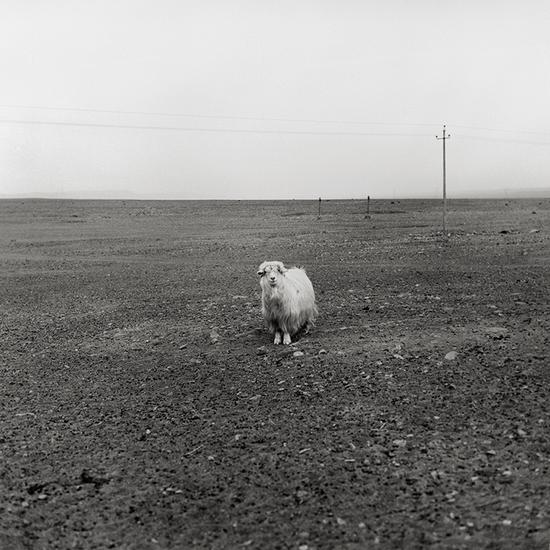 动物系列-2013年2月,内蒙古 阿拉善,20x20cm,铂钯工艺
动物系列-2013年2月,内蒙古 阿拉善,20x20cm,铂钯工艺但是,纪实摄影的过度社会化和政治化,也必然会走向它自身的对立面。也就是说,纪实摄影在用个人化和非主流的方式解构了一种虚伪的“真实性”的同时,其自身也被塑造为另一种唯一的“真实性”的时候,它实际上也就成为自己所要反对的负面。
故而,社会性题材的摄影方式,究其本质而言,它是基于个人综合社会经验的一种主观表达。虽然冠以纪实摄影,但它的个人性和主观性特点也是毋庸置疑的。那么,在这个前提下来看司维东的摄影作品的时候,我们便可以发现其中独特的价值。
首先,司维东的摄影作品并没有拘泥于某些特殊场景或对象的精雕细琢,他的镜头实际上是通过自己全方位地感知中国在这个特定历史阶段中的社会景观,通过自己用苦行僧式的行走方式所得到的视觉感受,从而将这种基于个人判断的社会态度综合还原出来。所以,我们在观看司维东的作品的时候,既可以感受到其中的非主流特质,同时也看到他并没有因此而流于一般的纪实摄影模式化的俗套。究其原因,一方面这是作者在经受孤独、苦痛之后,用自己的肉体之躯直接感知对象之后的结果。另一方面则来自于作者用一种综合感知的方式来处理每一个场景、每一个对象、每一个画面。所以,体现在司维东作品中的“真实性”既不是概念化的,也不是那种流俗化的纪实摄影套路。我们在面对他的作品的时候,甚至可以感受到镜头背后的那种荒漠上的炙烤、冰雪下的彻骨之寒、废墟中的孤独、大海之外的虚无,以及人性的乖戾和时代的荒诞。所以,从这个角度而言,司维东的摄影作品给我们提供了一个关于这个时代的最真实的社会影像档案。
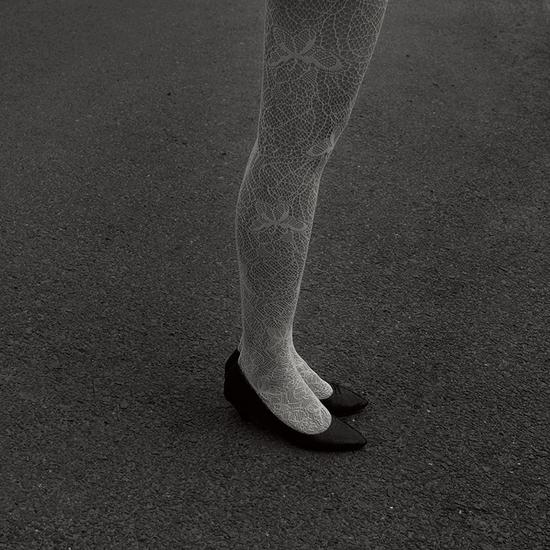 人文系列-2010年5月,日本 德岛,20x20cm,铂钯工艺
人文系列-2010年5月,日本 德岛,20x20cm,铂钯工艺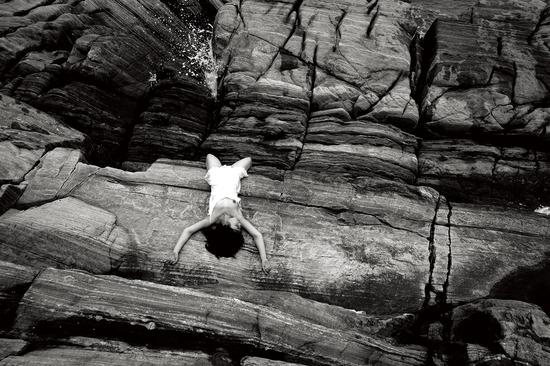 人文系列-2008年8月,山东 威海,20x29cm,铂钯工艺
人文系列-2008年8月,山东 威海,20x29cm,铂钯工艺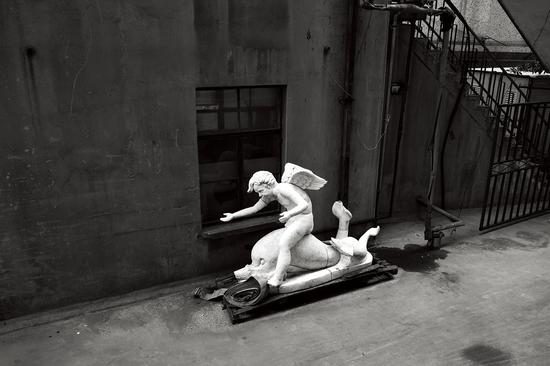 人文系列-2007年7月,上海,20x29cm,铂钯工艺
人文系列-2007年7月,上海,20x29cm,铂钯工艺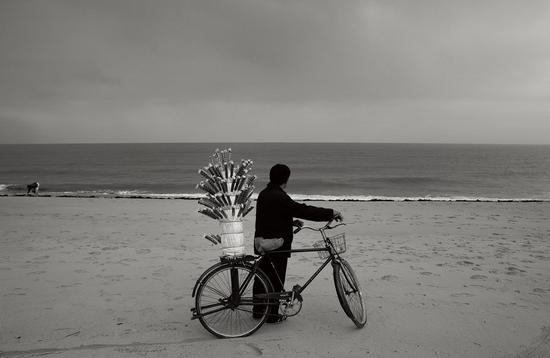 人文系列-2005年10月,山东 威海,20x29cm,铂钯工艺
人文系列-2005年10月,山东 威海,20x29cm,铂钯工艺其次,司维东的作品又是主观的。他并没有匍匐在所谓的客观真实面前,而是通过自己的镜头,敏锐地捕捉到了弥漫在我们这个时代中的一种普遍的社会情绪和集体无意识。司维东的作品虽然分为了人文、动物、自然、废墟、信仰这五个主题,但是实际上是通过对于社会景观和自然景观的表现,深入地剖析到了中国目前的这个特殊的历史转型时期中,人的内心的煎熬和挣扎,以及由此而带来的那种沁入骨髓的孤独、莫名而普遍的乖戾,欲望的无序生长以及人性的疏离和虚无、情感的冷漠与荒芜。即便如此,司维东在通过镜头语言捕捉和传达这种社会普遍情绪的时候,并没有采取过分煽情的方式,而是将情绪表达克制到甚至有些冷漠的地步,但是,唯如此,这种的对于社会情绪的内心真实基础的挖掘也才更为深入和彻底。
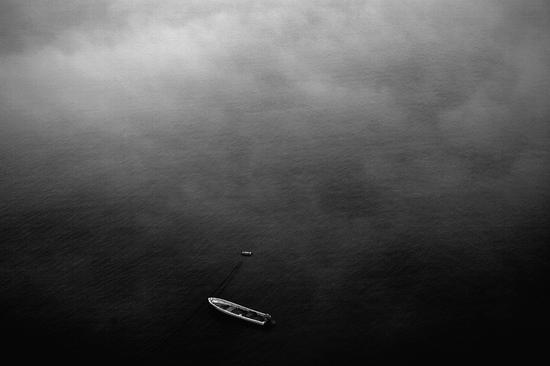 自然系列-2008年8月,山东 威海,20x29cm,铂钯工艺
自然系列-2008年8月,山东 威海,20x29cm,铂钯工艺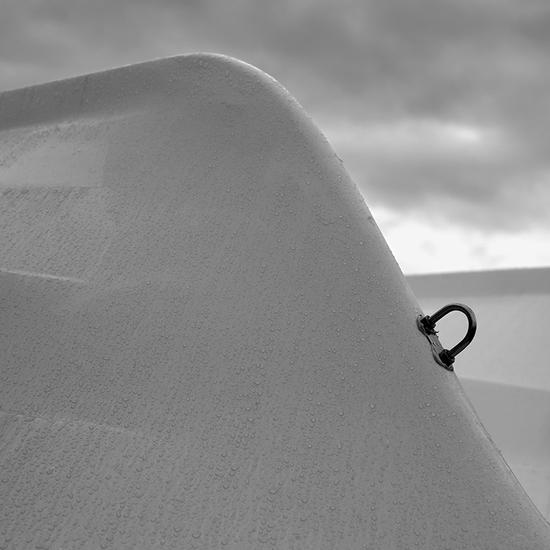 自然系列-2008年8月,山东 威海, 20x20cm,铂钯工艺
自然系列-2008年8月,山东 威海, 20x20cm,铂钯工艺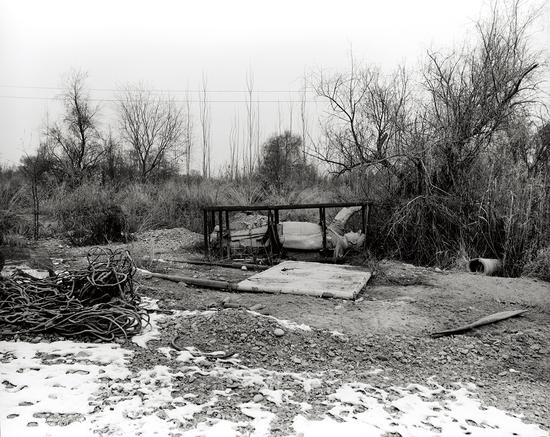 信仰系列-2012年2月,新疆 阿克苏,20x26cm,铂钯工艺
信仰系列-2012年2月,新疆 阿克苏,20x26cm,铂钯工艺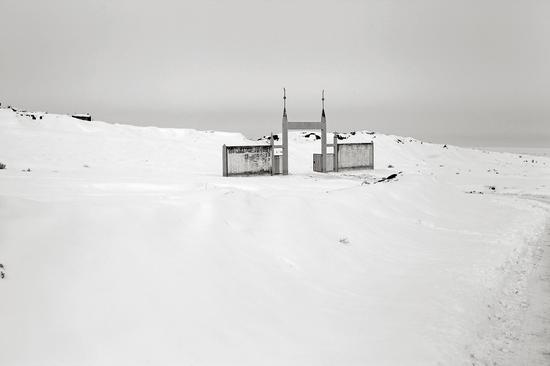 信仰系列-2012年,新疆 乌苏,20x29cm,艺术微喷
信仰系列-2012年,新疆 乌苏,20x29cm,艺术微喷其三,正是因为司维东的摄影作品对于社会感知的综合性以及对于社会心理挖掘的真实性,从而又使之具有了某种对于时代特征的象征性把握。而这种把握和呈现,既不是通过概念式陈述也不是对象本身的直白,而是介于在主观和客观之间,从而使他的作品具有了一种抒情化的诗性表达。其实,这也是司维东的作品中非常有价值的一种影像语言方式。也就是说,一方面,他的作品是通过废墟、荒漠这些意象象征了这个我们所身处的这个社会的时代性特征;而另一方面,这种意象的呈现过程又体现了某种诗化的特质。也正因为这种特质,我认为司维东的作品是介于在观念性摄影与纪实摄影之间的一种只属于他自己的个性化摄影风格。
2017年3月29日 于北京
(吴鸿:批评家、策展人,艺术国际主编,宋庄当代艺术文献馆执行馆长)
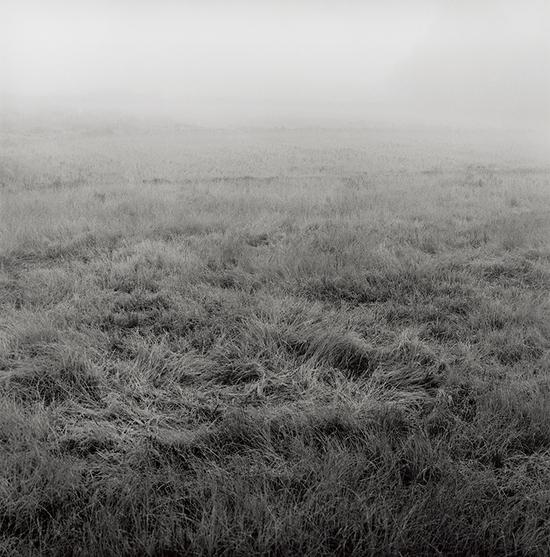 自然系列-2013年5月,江西 婺源,20x20cm,铂钯工艺
自然系列-2013年5月,江西 婺源,20x20cm,铂钯工艺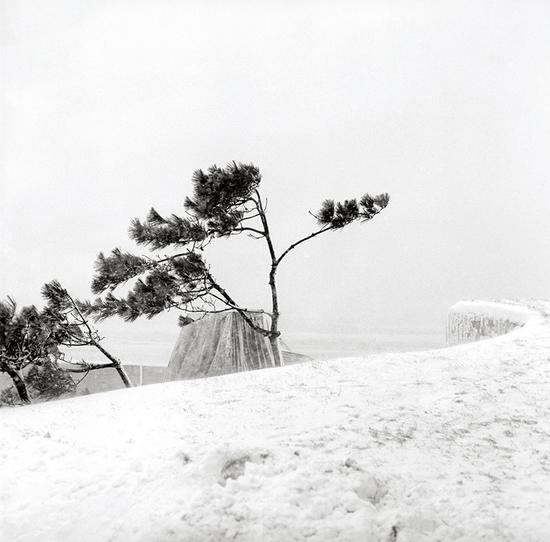 自然系列-2012年12月,山东 威海,20x20cm,铂钯工艺
自然系列-2012年12月,山东 威海,20x20cm,铂钯工艺Lyric expression in ruins——The comment of photograph of Si Weidong
Wu Hong
Documentary photography does not only mean a kind of photography type, but it also represents a social attitude and value judgment。 On the other hand, since the second half of last century, the success or failure of documentary photography was changing, with the political situation in the different era。
The beginning of the eighties of last century was a watershed。 Before that time, documentary photography, which was about political information, was illegal, and it existed in private。 Because of social responsibility, someone involved significant risk and voluntarily and instinctively used camera document the social reality of the era at the outside of photography standard of expressing mainstream value and ideology。 It did not have a good way to publish and communicate in public because its method was private and sporadic。 Thus, documentary photography is “Untitled” at that time, which eventually existed in a personal and voluntary way, but still, could not be titled as a cultural phenomenon。
There is a question : photography is subjectivity or objectivity。 On the other hand, is it objective reappearing for “a real object,” or just regard the object as a tool for expressing a subjective idea?
In photography technical way, through physical optics, and chemical method, put the image of the object on particular media to make the object most realistically reappear。 It seems like we can get a simple proposition “photography=reality” or”image=objective existence,” so photography as an efficient and direct propagandistic method is still consciously working with its ”objective” and “real” in social and political activity。
In fact, whatever entirety of society, or some individual objects, people realize it in a proper way is based on a multifaceted and integrated sensory analysis。 However, photography is just based on some individual perspective and captures an individual moment, which is an one-sidedness and limitation。
At the beginning of the eighties of last century, the progressive significance of documentary photography is through presenting “another” perspective and method of observation to break uniqueness and holiness of official photography standard of mainstream ideology。 Therefore, with mainstream photography establishing on the “authenticity” is destroyed, makes people suspect and rethink the social concept and political propaganda of grand unification。
However, when documentary photography has too much socialization and politic, it will certainly go to its opposite。 That is to say。 Documentary photography is using personal and alternative way to deconstruct a kind of false“authenticity。” At the same time, when it is created another only “authenticity,” it actually functions against of itself。
As for photography of social theme, according to itself, it is based on a subjective expression of the integrated social experience of the person。 Though it is called documentary photography, its personalize and the subjective feature is also undoubted。 Therefore, with this in mind, when we are looking at Si, Weidong’s works, we could realize the individual value of the works。
At first, Si, Weidong’s works is not constrained by the local details of some particular scenes and objects。 His perspective actually is through himself to roundly sense social landscape that China is in a specific historical period。 Through his walking method as a sadhu(ascetic) to get a visual experience, and synthetically reproduce the social attitude that it is based on personal judgment。 When we look at Si’s work, we could get a kind non-mainstream peculiarity, and we can realize he does not have a stereotype as normal documentary photography。 The reason is after the photographer experienced lonely and suffering, he feels object directly by his body。 On the other hand, it comes from photographer who used a comprehensive physical feeling to deal with every scene, every object, every image。 Therefore, the ”authenticity” of Si’s works, is not conceptual, and stereotyped documentary photography。 When we face his works, we can even feel context that sunburn of dessert, bitter cold of snow, lonely of ruins, boundless ocean, a warp of personality, and absurdity of time。 Si’s work could provide a most realistic photographic archive about society at this time。
At second, Si’s works are very subjective。 He does not succumb to objectivity。 However, he uses his camera to subtly capture a social emotion and collective unconsciousness in our time。 Although Si’s works have five themes that are human, animal, nature, ruins, faith, but actually is through the expression of social landscape and natural landscape to deeply analyze people’s struggling and suffering, so that expressing an extremely lonely and a warp of personality, which is in Chinese historical transformation。 When Si captures and communicates social emotion, he does not use too much emotional way。 He prefers to control his emotion as a kind of indifference。 However, because of this, his real social emotion is dug deeper and clear。
Finally, because of Si’s works have an authenticity that he can make comprehensiveness of social perception and social psychology, so he has a symbolic grasp of time feature。 However, the presentation of the grasp is neither through conceptual statement, nor truth of the objects, and it is between the subjectivity and objectivity, to make his works have a lyric expression。 In fact, it is also a valuable image language that his works have。 We could say, his works through ruins and desert to represent our time feature in society。 On the other hand, the imagines present some poetic peculiarity。 Because of this peculiarity, I think Si’s works have an individual way that it is between conceptual photography and documentary photography。
2017.3.29 Beijing
(Wu Hong: critic, curator, editor of art intern,excutive curator of Song zhuang Contemporary Archive)














